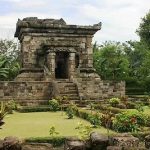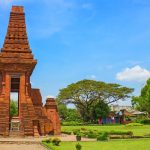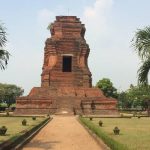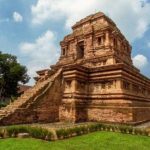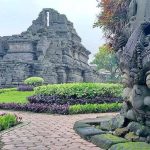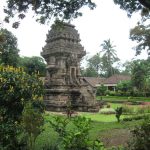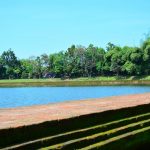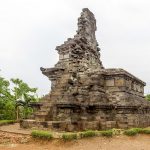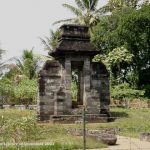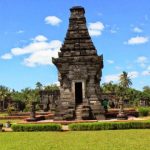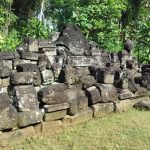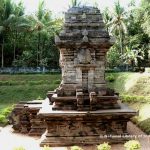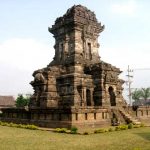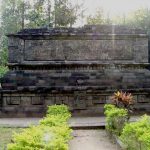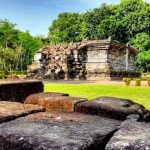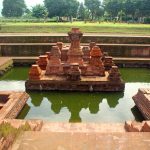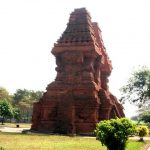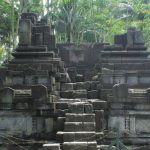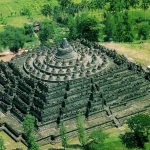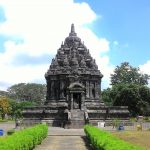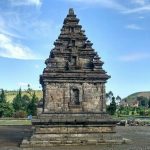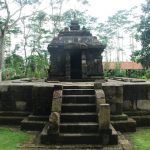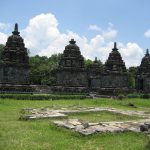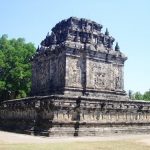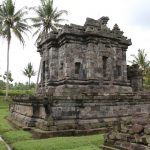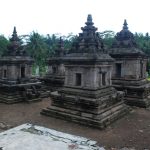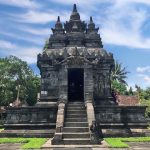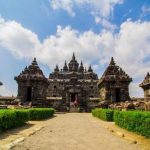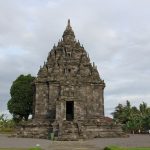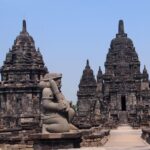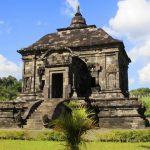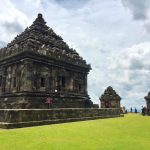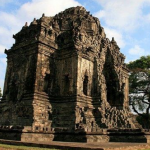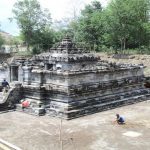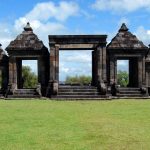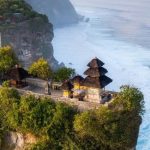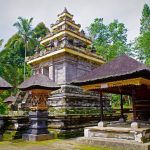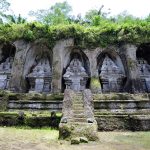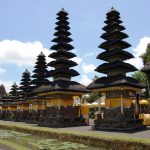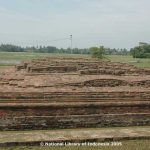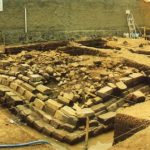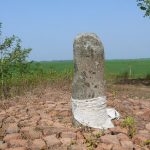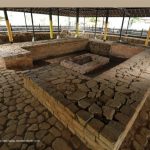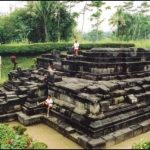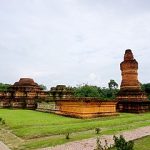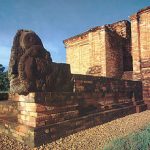There are 18 Temples located on the East Java Province. They are; Badhut Temple, Bajangratu Temple, Brahu Temple, Gununggangsir Temple, Jago Temple, Jawi Temple, Kidal, Kolam Segaran, Panataran Temple, Plumbangan Temple, Rimbi Temple, Sadon Temple, Sawentar Temple, Singasari Temple, Surawana Temple, Tegawangi Temple, Tikus Temple, and Wringinlanang Temple.
Temples in East Java are typically slimmer, with the roof composed of horizontal layers of diminishing size and topped with a cubical stone. It is also common at the temples that on the sides of gate frames, there are statues or sculpture of dragons instead of sculpture of Makaras. Most of them are adorned with bas-relief in symbolical style. Objects in the relief sculpture are shown half-face, and the characters depicted are mostly from Hindu epics. Tipically, they are decorated with relief sculpture or statues that represent Trimurti, the Hindu trinity of gods, or gods relating to Shiva such as Durga, Ganesha or Agastya. In most cases, Hindu-style figures and decorations are presented along with Buddhist figurines or adornment of Tantrayanistic Buddhism.
There are 4 Temples located spread across
West Java Province. These Temples are; Batujaya Temple, Bojongmenje Temple, Cangkuang Temple, and Cibuaya Temple.
In the last 30 years, some new historical sites were discovered in several different places in West Java, such as Bojongmenje Temple in Kampong Bojongmenje, Cangkuang Village, Rancaekek Sub-district, Bandung District (discovered on August 18th, 2002); Ronggeng Temple or Pamarican Temple in Pamarican Sub-dsitrict, Ciamis District (discovered in 1977); Batujaya Temple complex in Batujaya Sub-district and in Cibuaya, Karawang District; also Cangkuang Temple in Cangkuang Village, Leles Sub-district, Garut District. Although facts about when and by whom those temples were built have yet been successfully revealed, experts are optimistic that the discoveries will contribute to years of efforts to disclose the history of kingdoms in West Java.
There are 2 temples in
South Kalimantan: 1. Agung Temple, a Hindu temple in Central Amuntai, North Hulu Sungai Regency; and 2. Laras Temple, a Buddhist temple in Tapin.
In Sumatra, among the temples in the Padang Lawas area, the best known is Candi Bahal which is located in Bahal Village. In the Bahal Temple complex, there are three renovated temple buildings, namely Bahal I, Bahal II and III Bahal Temples.
Another quite large and famous temple in Sumatra is the
Muara Takus Temple which is located in
Riau Province, precisely in Muara Takus Village, Tigabelas Koto District, Kampar Regency. Also, there is a
Muaro Jambi temple, a Buddhist temple complex, in Muaro Jambi Regency,
Jambi province, Sumatra, Indonesia.
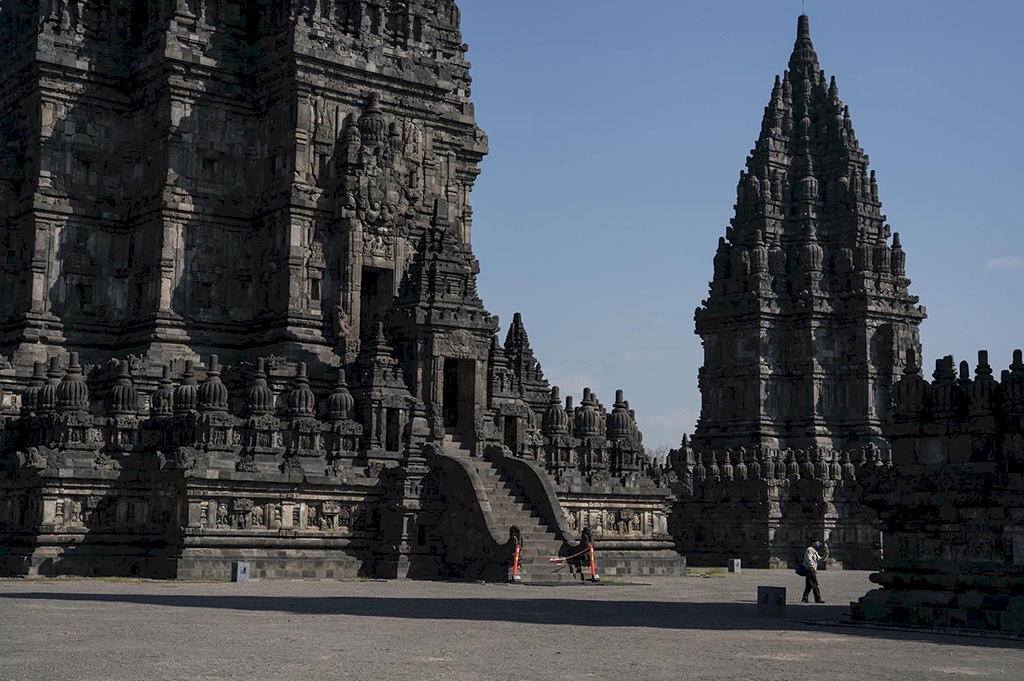 The word ‘candi’ (temple) refers to buildings of various shapes and functions, such as a worshipping place, a religious teaching center, a funerary place for keeping ashes of kings, a dwelling place of the divine, a royal bathing place, or a gateway. Although temples once served many functions, they were built mostly to accommodate Buddhism or Hinduism religious activities.
The word ‘candi’ (temple) refers to buildings of various shapes and functions, such as a worshipping place, a religious teaching center, a funerary place for keeping ashes of kings, a dwelling place of the divine, a royal bathing place, or a gateway. Although temples once served many functions, they were built mostly to accommodate Buddhism or Hinduism religious activities.
